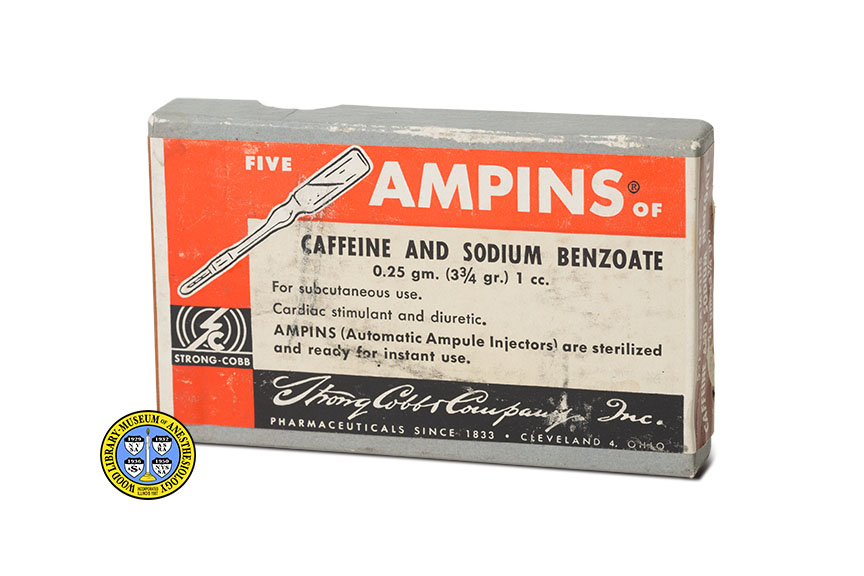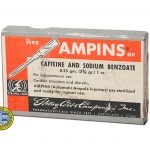Caffeine and Sodium Benzoate
Caffeine is a compound that occurs naturally in many plants, including coffee, tea, cocoa, yerba maté, guarana, and kola. It was first isolated in 1819 and was first synthesized in 1895. Long known for its stimulating effects, it has also been used as a diuretic, and as an ingredient in many nonprescription headache remedies. Because of its antiseptic properties, sodium benzoate is commonly used today as a food preservative.
Anesthesiologists conducted research with this and other central nervous system stimulants to see if they could counteract side effects, such as diminished blood pressure or respiration, during anesthesia. In the late 19th and early 20th centuries, the combination of caffeine and sodium benzoate was used in injections to stimulate the heart and breathing. The later development of improved ventilation techniques provided a safer and more effective means for these purposes. This example of the drug was probably manufactured in the 1950s, and was packaged in the form of ready-to-use injection ampoules, called “Ampins”.
Catalog Record: Caffeine and Sodium Benzoate Catalog record not unavailable.


